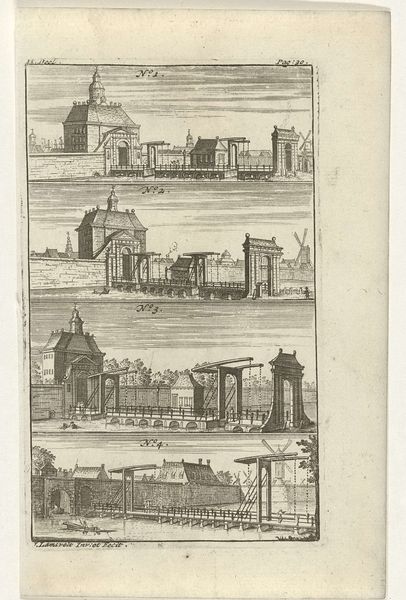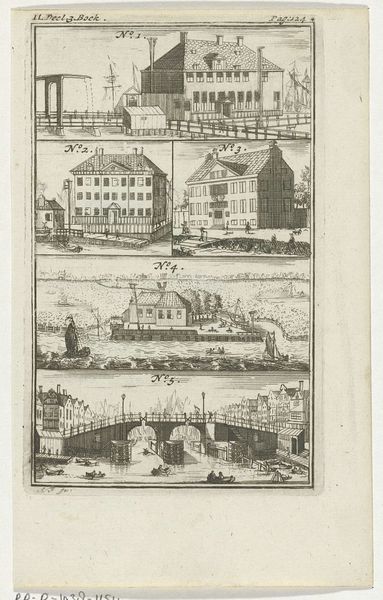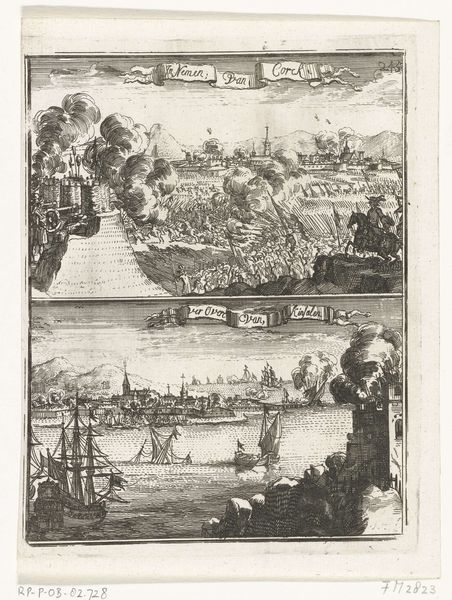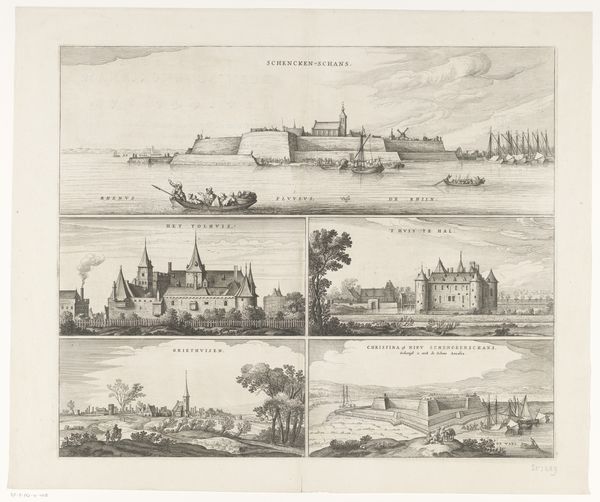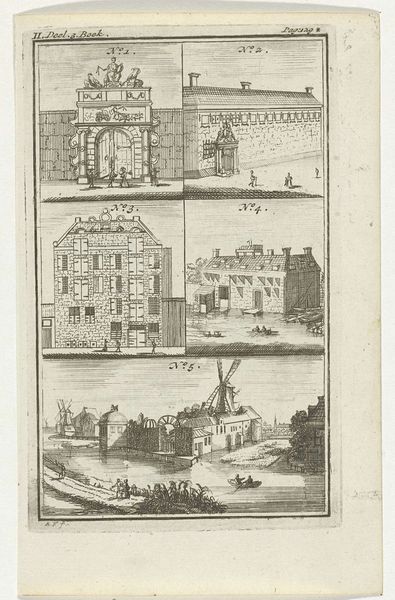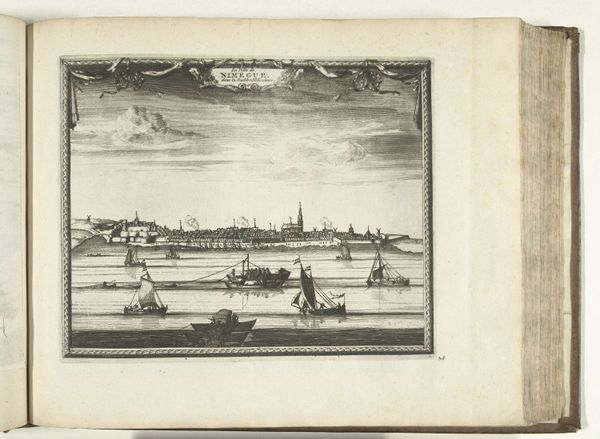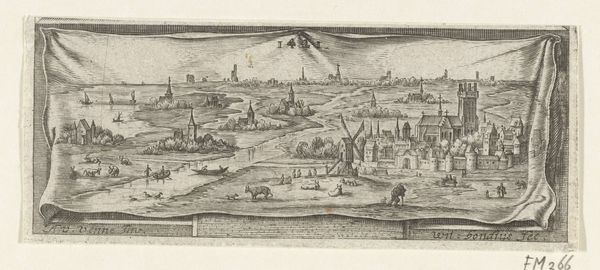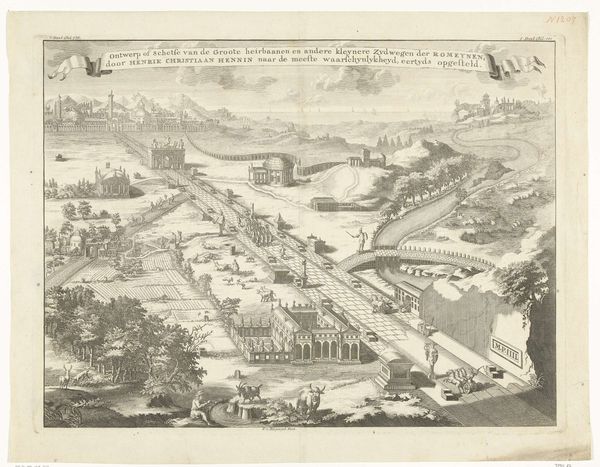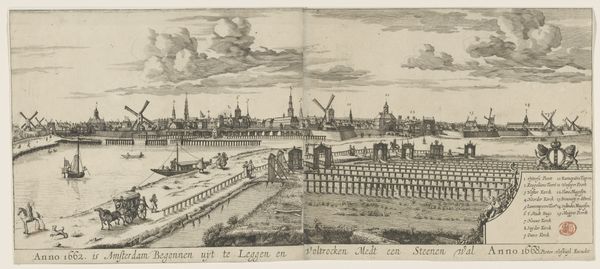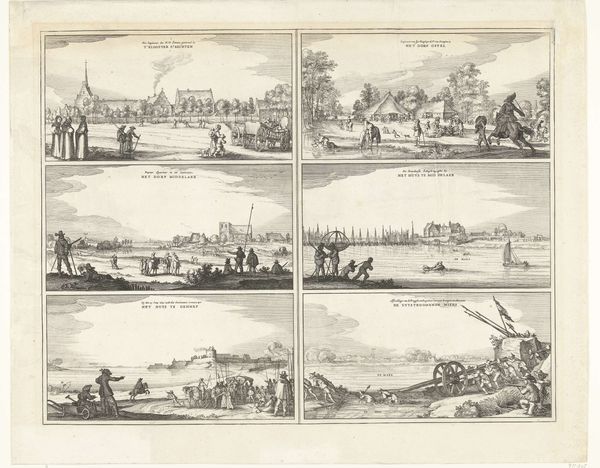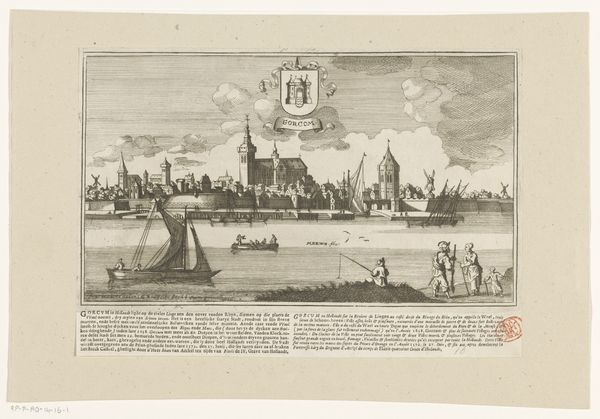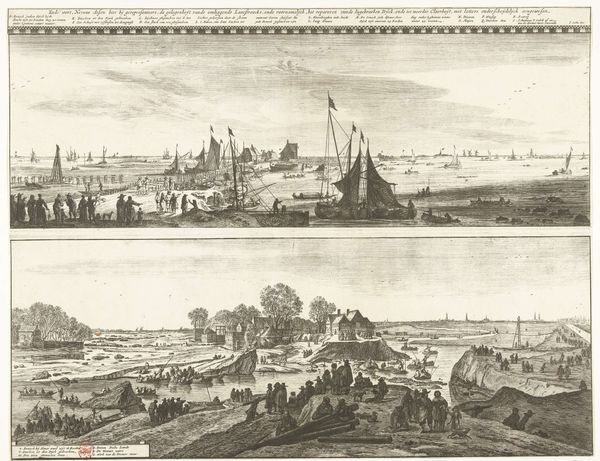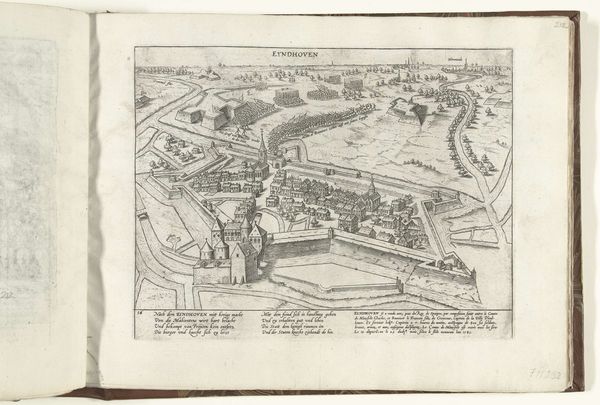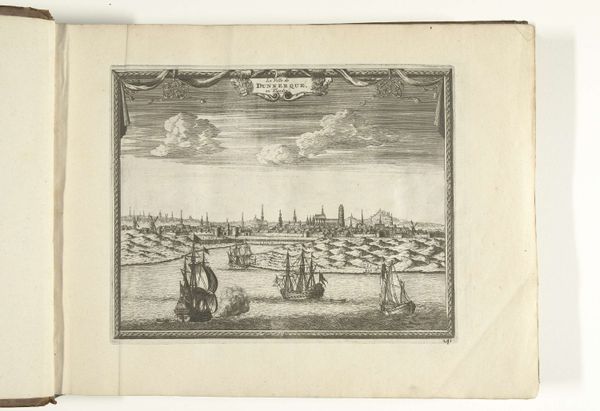
print, etching, engraving
#
baroque
#
dutch-golden-age
# print
#
etching
#
cityscape
#
engraving
Dimensions: height 129 mm, width 82 mm
Copyright: Rijks Museum: Open Domain
Curator: Here we have Jan Lamsvelt's "Vier verschillende poorten te Amsterdam," or "Four Different Gates of Amsterdam," created in 1723. Editor: The way the artist meticulously renders these urban structures in monochrome has a nostalgic, almost blueprint quality. What stories do these gates hold? Curator: This print is really a glimpse into Amsterdam's socio-political evolution in the early 18th century. These gates were critical checkpoints for trade, immigration, and also defence of Amsterdam, central to controlling movement and commerce within the city. Each one likely served a distinct function. Editor: The emphasis on structural details -- I’m thinking particularly about the winches for lifting the bridge sections -- makes me curious about the craftspeople who built and maintained them. How their daily labor shaped Amsterdam's identity, both visually and economically. And what about the materials: were they sourced locally, impacting the region's natural resources? Curator: Absolutely, we often forget these cityscapes aren't just aesthetic records, they're complex systems of power and labor visualized. This work offers an important view into city planning and defense strategies, crucial elements defining Amsterdam's baroque identity, which later transition during the Dutch Golden Age. Editor: Thinking about the etched lines themselves as a medium – each stroke representing human hours and skills in communicating ideas. The precision necessary to replicate these structures! You almost forget that this piece too, as print, serves the purpose of gate – distributing visual access. Curator: Exactly! Printmaking democratized access, extending images to wider audiences far beyond the elite who controlled the actual gates themselves. Editor: It really makes you consider what Amsterdam was really made of—more than stone and mortar; systems that were integral to shaping a city that still resonates. Curator: It does—it invites us to see our cities not just as built environments, but also the stories behind those that planned and defended the vision of its gates.
Comments
No comments
Be the first to comment and join the conversation on the ultimate creative platform.
